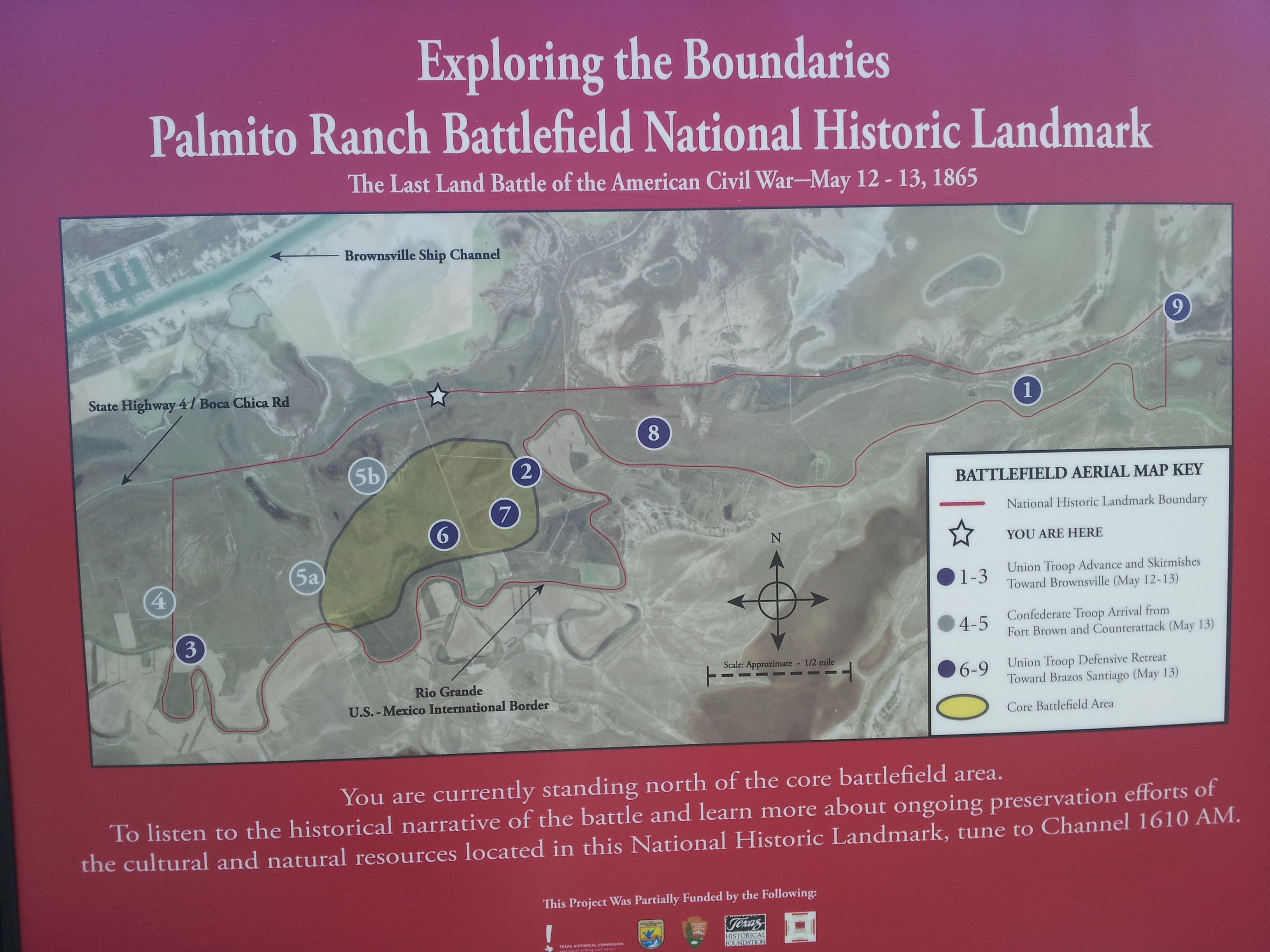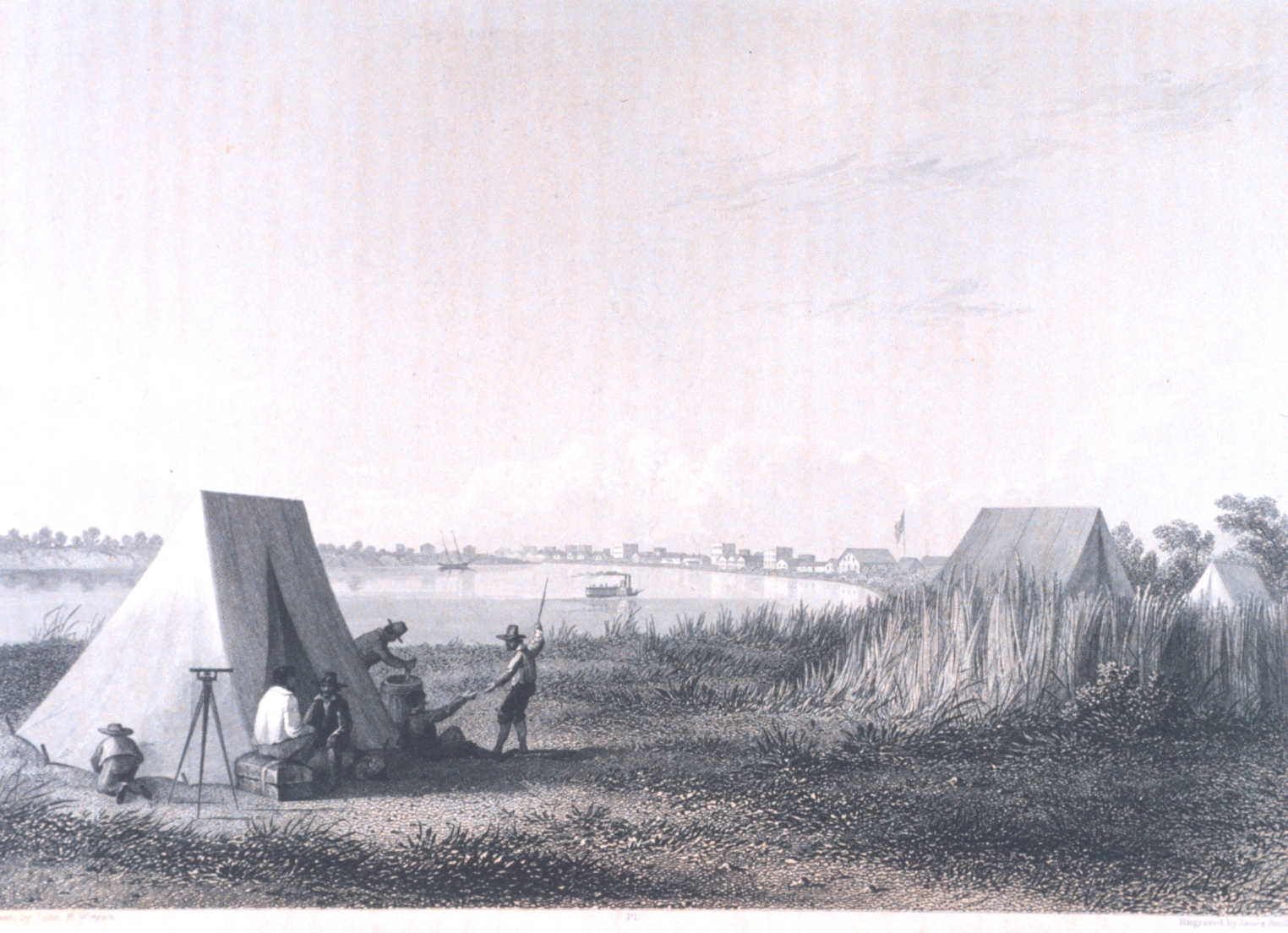|
John Salmon Ford
John Salmon Ford (May 26, 1815 – November 3, 1897), better known as "Rip" Ford, was a member of the Republic of Texas Congress and later of the State Senate, and mayor of Brownsville, Texas. He was also a Texas Ranger, a Confederate colonel, doctor, lawyer, and a journalist and newspaper owner. Ford commanded men during the Antelope Hills expedition, and he later commanded the Confederate forces in what was arguably the last engagement of the American Civil War, the Battle of Palmito Ranch on May 12–13, 1865. It was a Confederate victory, but as it occurred more than a month after Robert E. Lee's surrender, it had no effect on the outcome of the war. Early life Ford was born in Greenville District, South Carolina, but grew up in Lincoln County, Tennessee. His parents were William and Harriet Ford. When he was 16 he moved to Shelbyville, Tennessee, to study medicine. There he met his future wife, Mary Davis. However, the marriage ended in divorce and Ford decided to move t ... [...More Info...] [...Related Items...] OR: [Wikipedia] [Google] [Baidu] |
American Civil War
The American Civil War (April 12, 1861 – May 26, 1865; also known by other names) was a civil war in the United States. It was fought between the Union ("the North") and the Confederacy ("the South"), the latter formed by states that had seceded. The central cause of the war was the dispute over whether slavery would be permitted to expand into the western territories, leading to more slave states, or be prevented from doing so, which was widely believed would place slavery on a course of ultimate extinction. Decades of political controversy over slavery were brought to a head by the victory in the 1860 U.S. presidential election of Abraham Lincoln, who opposed slavery's expansion into the west. An initial seven southern slave states responded to Lincoln's victory by seceding from the United States and, in 1861, forming the Confederacy. The Confederacy seized U.S. forts and other federal assets within their borders. Led by Confederate President Jefferson Davis, ... [...More Info...] [...Related Items...] OR: [Wikipedia] [Google] [Baidu] |
Battle Of Palmito Ranch
The Battle of Palmito Ranch, also known as the Battle of Palmito Hill, is considered by some criteria as the final battle of the American Civil War. It was fought May 12 and 13, 1865, on the banks of the Rio Grande east of Brownsville, Texas, and a few miles from the seaport of Los Brazos de Santiago, at the southern tip of Texas. The battle took place more than a month after the general surrender of Confederate forces to Union forces at Appomattox Court House, which had since been communicated to both commanders at Palmito, and in the intervening weeks the Confederacy had collapsed entirely, so it could also be classified as a postwar action. Union and Confederate forces in southern Texas had been observing an unofficial truce since the beginning of 1865, but Union Colonel Theodore H. Barrett, newly assigned to command an all-black unit and never having been involved in combat, ordered an attack on a Confederate camp near Fort Brown for unknown reasons. The Union attackers cap ... [...More Info...] [...Related Items...] OR: [Wikipedia] [Google] [Baidu] |
Austin, Texas
Austin is the capital city of the U.S. state of Texas, as well as the county seat, seat and largest city of Travis County, Texas, Travis County, with portions extending into Hays County, Texas, Hays and Williamson County, Texas, Williamson counties. Incorporated on December 27, 1839, it is the List of United States cities by population, 11th-most-populous city in the United States, the List of cities in Texas by population, fourth-most-populous city in Texas, the List of capitals in the United States, second-most-populous state capital city, and the most populous state capital that is not also the most populous city in its state. It has been one of the fastest growing large cities in the United States since 2010. Downtown Austin and Downtown San Antonio are approximately apart, and both fall along the Interstate 35 corridor. Some observers believe that the two regions may some day form a new "metroplex" similar to Dallas–Fort Worth metroplex, Dallas and Fort Worth. Austin i ... [...More Info...] [...Related Items...] OR: [Wikipedia] [Google] [Baidu] |
San Augustine, Texas
San Augustine is the county seat city of San Augustine County, Texas, in East Texas, United States. The population was at the 2020 census. History The first European settlement in the area began in 1717 with the establishment of Mission Nuestra Señora de los Dolores de los Ais by Spanish missionaries. The mission was abandoned and reestablished in 1721. It lasted until 1773 and is now preserved as Mission Dolores State Historic Site The town began in 1832 with land owned by Thomas S. McFarland. The town was named after the Presidio de San Agustín de Ahumada, which had been named in honor of the (1755–1761) Viceroy of New Spain, Don Agustín de Ahumada y Villalón. Geography San Augustine is located at (31.531086, –94.110971). According to the United States Census Bureau, the city has a total area of , of which is land and (2.08%) is water. Climate The climate in this area is characterized by hot, humid summers and generally mild to cool winters. According to t ... [...More Info...] [...Related Items...] OR: [Wikipedia] [Google] [Baidu] |
Gone To Texas
Gone to Texas (often abbreviated GTT), was a phrase used by Americans emigrating to Texas in the 19th century. During the Panic of 1819, many left the United States and moved there to escape debt. Moving to Texas, which at the time was part of Mexico, was particularly popular among debtors from the South and West. Emigrants or their abandoned neighbors often wrote the phrase on doors of abandoned houses or posted as a sign on fences. While speaking in Nacogdoches, Texas Nacogdoches ( ) is a small city in East Texas and the county seat of Nacogdoches County, Texas, United States. The 2020 U.S. census recorded the city's population at 32,147. Nacogdoches is a sister city of the smaller, similarly named Natchito ... in early 1836, shortly before his death at The Alamo, Davy Crockett is quoted regarding his last campaign for Congress: A gentleman from Nacogdoches, in Texas, informs us, that, whilst there, he dined in public with col. Crockett, who had just arrived from T ... [...More Info...] [...Related Items...] OR: [Wikipedia] [Google] [Baidu] |
Shelbyville, Tennessee
Shelbyville is a city in and the county seat of Bedford County, Tennessee, United States. The town was laid out in 1810 and incorporated in 1819. Shelbyville had a population of 20,335 residents at the 2010 census. The town is a hub of the Tennessee Walking Horse industry and has been nicknamed "The Walking Horse Capital of the World". Geography Shelbyville is in Middle Tennessee on a Highland Rim limestone bluff upon the banks of Duck River, which flows around the southern and eastern sides of town. According to the United States Census Bureau, the city has a total area of , all land. Climate Demographics 2020 census As of the 2020 United States census, there were 23,557 people, 7,257 households, and 5,025 families residing in the city. 2000 census As of the census of 2000, there were 16,105 people, 6,066 households, and 4,155 families residing in the city. The population density was 1,041.3 people per square mile (402.0/km2). There were 6,550 housing units at an average ... [...More Info...] [...Related Items...] OR: [Wikipedia] [Google] [Baidu] |
Lincoln County, Tennessee
Lincoln County is a county located in the south central part of the U.S. state of Tennessee. As of the 2020 census, the population was 35,319. Its county seat and largest city is Fayetteville. The county is named for Major General Benjamin Lincoln, an officer in the American Revolutionary War. History Lincoln County was created in 1809 from parts of Bedford County. The land occupied by the county was part of a land cession obtained from the Cherokee and Chickasaw in 1806. The Lincoln County Process, used in the distillation of Tennessee whiskey, is named for this county, as the Jack Daniel Distillery was originally located there. However, a subsequent redrawing of county lines resulted in the establishment of adjacent Moore County, which includes the location of the distillery. Another distillery opened in Lincoln County in 1997 – the Benjamin Pritchard's Distillery. However, it does not use the Lincoln County Process for making its Tennessee whiskey. When a law was est ... [...More Info...] [...Related Items...] OR: [Wikipedia] [Google] [Baidu] |
Robert E
The name Robert is an ancient Germanic given name, from Proto-Germanic "fame" and "bright" (''Hrōþiberhtaz''). Compare Old Dutch ''Robrecht'' and Old High German ''Hrodebert'' (a compound of '' Hruod'' ( non, Hróðr) "fame, glory, honour, praise, renown" and ''berht'' "bright, light, shining"). It is the second most frequently used given name of ancient Germanic origin. It is also in use as a surname. Another commonly used form of the name is Rupert. After becoming widely used in Continental Europe it entered England in its Old French form ''Robert'', where an Old English cognate form (''Hrēodbēorht'', ''Hrodberht'', ''Hrēodbēorð'', ''Hrœdbœrð'', ''Hrœdberð'', ''Hrōðberχtŕ'') had existed before the Norman Conquest. The feminine version is Roberta. The Italian, Portuguese, and Spanish form is Roberto. Robert is also a common name in many Germanic languages, including English, German, Dutch, Norwegian, Swedish, Scots, Danish, and Icelandic. It can be use ... [...More Info...] [...Related Items...] OR: [Wikipedia] [Google] [Baidu] |
Confederate States Army
The Confederate States Army, also called the Confederate Army or the Southern Army, was the military land force of the Confederate States of America (commonly referred to as the Confederacy) during the American Civil War (1861–1865), fighting against the United States forces to win the independence of the Southern states and uphold the institution of slavery. On February 28, 1861, the Provisional Confederate Congress established a provisional volunteer army and gave control over military operations and authority for mustering state forces and volunteers to the newly chosen Confederate president, Jefferson Davis. Davis was a graduate of the U.S. Military Academy, and colonel of a volunteer regiment during the Mexican–American War. He had also been a United States senator from Mississippi and U.S. Secretary of War under President Franklin Pierce. On March 1, 1861, on behalf of the Confederate government, Davis assumed control of the military situation at Charleston, South C ... [...More Info...] [...Related Items...] OR: [Wikipedia] [Google] [Baidu] |
Brownsville, Texas
Brownsville () is a city in Cameron County in the U.S. state of Texas. It is on the western Gulf Coast in South Texas, adjacent to the border with Matamoros, Mexico. The city covers , and has a population of 186,738 as of the 2020 census. It is the 139th-largest city in the United States and 18th-largest in Texas. It is part of the Matamoros–Brownsville metropolitan area. The city is known for its year-round subtropical climate, deep-water seaport, and Hispanic culture. The city was founded in 1848 by American entrepreneur Charles Stillman after he developed a successful river-boat company nearby. It was named for Fort Brown, itself named after Major Jacob Brown, who fought and died while serving as a U.S. Army soldier during the Mexican–American War (1846–1848). As a county seat, the city and county governments are major employers. Other primary employers fall within the service, trade, and manufacturing industries, including a growing aerospace and space transpor ... [...More Info...] [...Related Items...] OR: [Wikipedia] [Google] [Baidu] |





